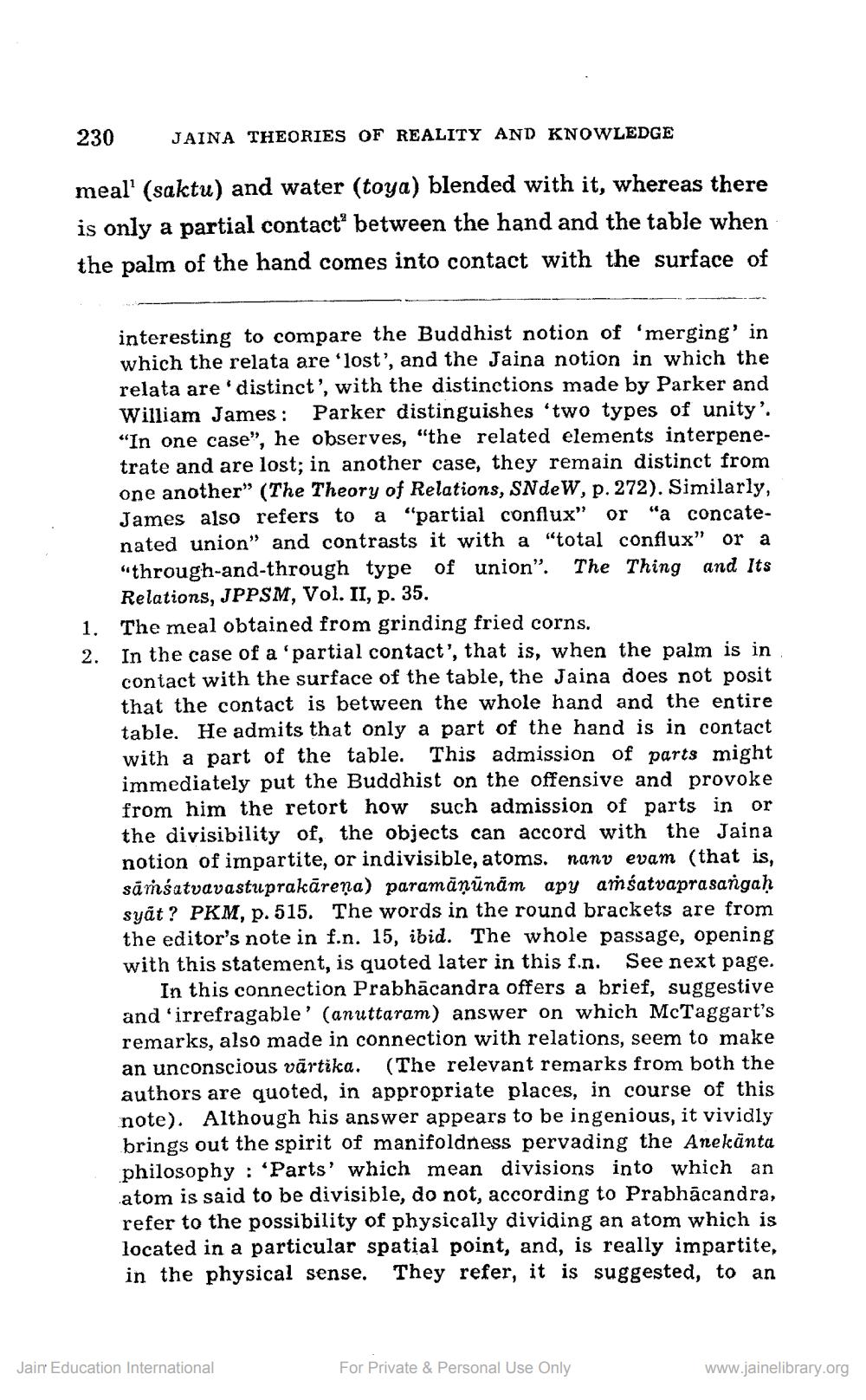________________
230
meal' (saktu) and water (toya) blended with it, whereas there is only a partial contact between the hand and the table when the palm of the hand comes into contact with the surface of
JAINA THEORIES OF REALITY AND KNOWLEDGE
interesting to compare the Buddhist notion of 'merging' in which the relata are 'lost', and the Jaina notion in which the relata are 'distinct', with the distinctions made by Parker and William James: Parker distinguishes 'two types of unity'. "In one case", he observes, "the related elements interpenetrate and are lost; in another case, they remain distinct from one another" (The Theory of Relations, SNde W, p. 272). Similarly, James also refers to a "partial conflux" or "a concatenated union" and contrasts it with a "total conflux" or a "through-and-through type of union". The Thing and Its Relations, JPPSM, Vol. II, p. 35.
1. The meal obtained from grinding fried corns.
2.
In the case of a 'partial contact', that is, when the palm is in contact with the surface of the table, the Jaina does not posit that the contact is between the whole hand and the entire table. He admits that only a part of the hand is in contact with a part of the table. This admission of parts might immediately put the Buddhist on the offensive and provoke from him the retort how such admission of parts in or the divisibility of, the objects can accord with the Jaina notion of impartite, or indivisible, atoms. nanv evam (that is, samsatvavastuprakāreņa) paramāņūnām apy aṁśatvaprasangaḥ syat? PKM, p. 515. The words in the round brackets are from the editor's note in f.n. 15, ibid. The whole passage, opening with this statement, is quoted later in this f.n. See next page.
In this connection Prabhācandra offers a brief, suggestive and 'irrefragable' (anuttaram) answer on which McTaggart's remarks, also made in connection with relations, seem to make an unconscious vārtika. (The relevant remarks from both the authors are quoted, in appropriate places, in course of this note). Although his answer appears to be ingenious, it vividly brings out the spirit of manifoldness pervading the Anekänta philosophy: 'Parts' which mean divisions into which an atom is said to be divisible, do not, according to Prabhācandra, refer to the possibility of physically dividing an atom which is located in a particular spatial point, and, is really impartite, in the physical sense. They refer, it is suggested, to an
Jain Education International
For Private & Personal Use Only
www.jainelibrary.org




